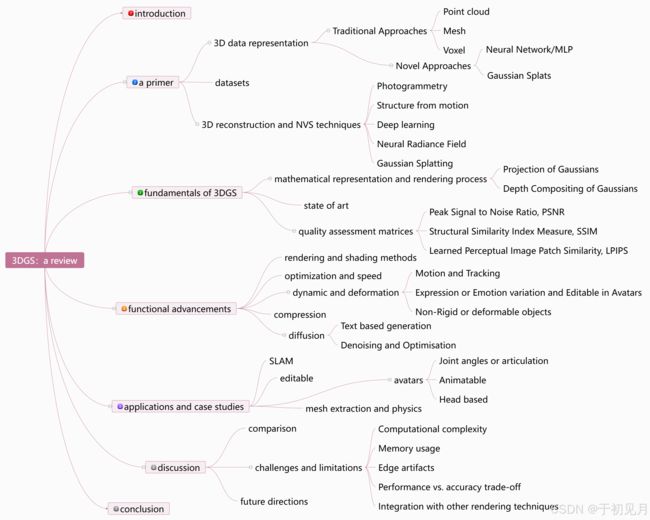- 推荐文章:探索深度学习的不确定性边界 —— SDE-Net 开源项目解析
史多苹Thomas
推荐文章:探索深度学习的不确定性边界——SDE-Net开源项目解析SDE-NetCodeforpaper:SDE-Net:EquippingDeepNeuralnetworkwithUncertaintyEstimates项目地址:https://gitcode.com/gh_mirrors/sd/SDE-Net在当今的人工智能领域,深度神经网络(DNN)已经成为推动技术创新的基石。然而,其预测的
- 长尾形分布论文速览三十篇【60-89】
木木阳
Long-tailed人工智能
长尾形分布速览(60-89)这些研究展示了LLMs在长尾数据分布、持续学习、异常检测、联邦学习、对比学习、知识图谱、推荐系统、多目标跟踪、标签修复、对象检测、医疗生物医学以及其他应用中的广泛应用。通过优化和创新,LLMs在这些领域展现了卓越的性能,并为解决长尾问题提供了有效的工具和方法。1.长尾持续学习与对抗学习长尾持续学习(Paper60):通过优化器状态重用来减少遗忘,提高在长尾任务中的持续学
- 长尾形分布论文速览【80-119】
木木阳
Long-tailed人工智能
为便于理解和应用,以下将30篇关于长尾分布的研究文献按主题进行分类整理。每一大类包含相应的工作,帮助我们从整体上把握各方向的研究进展。1.长尾半监督学习与伪标签优化Paper90:Uncertainty-awareSamplingforLong-tailedSemi-supervisedLearning提出了一种动态阈值选择方法(UDTS),能有效改善尾部分类性能,适用于不平衡类别的半监督学习。P
- CVPR2024无监督Unsupervised论文17篇速览
木木阳
CVPR无监督unsupervised
Paper1GuidedSlotAttentionforUnsupervisedVideoObjectSegmentation摘要小结:这段话的中文翻译如下:无监督视频对象分割旨在分割视频序列中最突出的对象。然而,复杂的背景和多个前景对象的存在使这项任务变得具有挑战性。为了解决这一问题,我们提出了一种引导式槽注意力网络,以加强空间结构信息并获得更好的前景-背景分离。初始化时带有查询引导的前景和背景
- CVPR2024 分割Segmentation相关论文37篇速览
木木阳
CVPR2024Segmentation分割论文
Paper1MFP:MakingFullUseofProbabilityMapsforInteractiveImageSegmentation摘要小结:最近的交互式分割算法中,将先前的概率图作为网络输入,以帮助当前分割轮次的预测。然而,尽管使用了先前的掩膜,概率图中包含的有用信息并没有很好地传播到当前预测中。在本文中,为了克服这一局限性,我们提出了一种新颖有效的基于点击的交互式图像分割算法MFP,
- Paper Reading《SoK: Prudent Evaluation Practices for Fuzzing》
小苑同学
安全性测试网络安全
论文链接:https://ieeexplore.ieee.org/stamp/stamp.jsp?tp=&arnumber=10646824IEEESSP20241Introduction(背景意义)模糊测试是发现软件漏洞的高效方法,被Meta、Google等企业广泛应用,且大量学术研究持续改进其技术(如覆盖反馈、领域扩展)。过去六年(2018-2023)中,顶级安全与软件工程会议上发表了超280
- Python知识点:如何使用Nvidia Jetson与Python进行边缘计算
杰哥在此
Python系列python边缘计算开发语言面试编程
开篇,先说一个好消息,截止到2025年1月1日前,翻到文末找到我,赠送定制版的开题报告和任务书,先到先得!过期不候!如何使用NvidiaJetson与Python进行边缘计算NvidiaJetson平台是专为边缘计算设计的一系列AI计算机,它们能够处理和分析来自物联网(IoT)设备和边缘节点的数据。这些设备小巧、节能且功能强大,非常适合用于执行机器学习、计算机视觉和自然语言处理等任务。Python
- 机器视觉:ransac算法详解
无水先生
数字图形和图像处理算法计算机视觉
目录一、说明:二、算法步骤三、算法代码四、其它补充一、说明:RANSAC是一种常用的参数估计方法,全称为RandomSampleConsensus(随机抽样一致性)。它通过随机选择数据中的一部分,然后根据这些数据拟合模型,统计模型与其他数据的偏差,最终筛选出符合一定阈值的数据,用于估计参数。RANSAC可以应用于很多领域,如计算机视觉、机器人和地理信息系统等。其优点在于对噪声数据和异常值有很强的鲁
- AI人工智能与OpenCV:实现智能图像编辑功能
AI智能探索者
AIAgent智能体开发实战人工智能opencv计算机视觉ai
AI人工智能与OpenCV:实现智能图像编辑功能关键词:人工智能、OpenCV、图像处理、计算机视觉、深度学习、智能编辑、图像增强摘要:本文深入探讨如何结合人工智能(AI)和OpenCV实现智能图像编辑功能。我们将从基础概念出发,详细介绍核心算法原理,展示实际代码实现,并分析典型应用场景。文章将涵盖从传统图像处理技术到深度学习方法的演进,重点讲解如何利用OpenCV和AI模型实现自动化的图像增强、
- 前端计算机视觉:使用 OpenCV.js 在浏览器中实现图像处理
亿只小灿灿
前端OpenCV前端计算机视觉opencv
一、OpenCV.js简介与环境搭建OpenCV(OpenSourceComputerVisionLibrary)是一个强大的计算机视觉库,广泛应用于图像和视频处理领域。传统上,OpenCV主要在后端使用Python或C++等语言。但随着WebAssembly(Wasm)技术的发展,OpenCV也有了JavaScript版本——OpenCV.js,它可以直接在浏览器中高效运行,为前端开发者提供了前
- Python 爬虫实战:从图片网站抓取图片并进行特征提取(2025 最新版)
Python爬虫项目
2025年爬虫实战项目python爬虫开发语言githubchrome数据库
一、引言在当今的数字时代,图像数据在各个领域中扮演着至关重要的角色。无论是计算机视觉、机器学习,还是数据分析,图像数据的获取和处理都是基础。然而,获取大量高质量的图像数据并非易事。幸运的是,互联网上充斥着丰富的图像资源,只需借助合适的工具和技术,我们就能高效地从中获取所需的图像数据。本文将详细介绍如何使用Python构建一个完整的爬虫系统,从图片网站抓取图像,并对其进行特征提取。我们将涵盖从网页分
- Python从0到100完整学习指南(必看导航)
是Dream呀
Pythonpython人工智能爬虫web神经网络算法深度学习
前言:零基础学Python:Python从0到100最新最全教程。想做这件事情很久了,这次我更新了自己所写过的所有博客,汇集成了Python从0到100,共一百节课,帮助大家一个月时间里从零基础到学习Python基础语法、Python爬虫、Web开发、计算机视觉、机器学习、神经网络以及人工智能相关知识,成为学业升学和工作就业的先行者!【优惠信息】•新专栏订阅前1000名享9.9元优惠•订阅量破10
- 如何在 Android 14系统中修改默认锁屏壁纸(非桌面壁纸)
熊熊饲养员
Android开发笔记android
如何在Android14系统中修改默认锁屏壁纸本文介绍如何通过修改LockscreenWallpaper.java文件,实现针对默认锁屏壁纸定制化需求。以下是具体实现方法和代码逻辑分析。需求背景客户要求在X设备上更换默认锁屏壁纸,其他设备保持原有壁纸不变。修改涉及系统UI模块的LockscreenWallpaper.java文件,通过条件判断实现差异化配置。代码修改步骤在LockscreenWal
- 前沿技术推动机器人的智能化升级
AI天才研究院
AI大模型企业级应用开发实战AgenticAI实战AI人工智能与大数据机器人ai
前沿技术推动机器人的智能化升级关键词:机器人智能化、人工智能、机器学习、计算机视觉、自主导航、人机交互、边缘计算摘要:本文深入探讨了前沿技术如何推动机器人从传统自动化向智能化升级的演进过程。文章首先分析了机器人技术发展的历史脉络和当前挑战,然后详细阐述了人工智能、机器学习、计算机视觉等关键技术如何赋能机器人智能化。通过算法原理分析、数学模型构建和实际项目案例,展示了智能机器人的核心技术实现路径。最
- OpenCV让Python实现人脸特征点检测
Python编程之道
Python编程之道opencvpython人工智能ai
OpenCV让Python实现人脸特征点检测关键词:OpenCV、Python、人脸检测、特征点定位、计算机视觉、Dlib、深度学习摘要:本文将深入探讨如何使用OpenCV和Python实现人脸特征点检测。我们将从基础概念开始,逐步介绍人脸检测和特征点定位的核心算法原理,包括传统的Haar级联检测器和基于深度学习的Dlib面部特征点检测器。文章将提供详细的代码实现和数学原理讲解,并通过实际项目案例
- 使用 C++ 和 OpenCV 构建驾驶员疲劳检测软件
whoarethenext
c++opencv开发语言
使用C++和OpenCV构建驾驶员疲劳检测软件重要声明:本文所描述的软件是一个概念验证的原型,绝对不能用作现实世界中的安全系统。真正的车载安全系统需要经过大量的测试、具备冗余设计并通过专业认证,以确保其绝对可靠。驾驶疲劳是全球范围内引发交通事故的主要原因之一。当驾驶员感到困倦时,他们的反应时间会变慢,决策能力会下降,而在方向盘后睡着的风险则会急剧增加。为了解决这一关键问题,计算机视觉技术提供了一个
- AI人工智能中LSTM在视频行为识别的应用
AI人工智能中LSTM在视频行为识别的应用关键词:LSTM、视频行为识别、深度学习、时序建模、计算机视觉、神经网络、动作识别摘要:本文将深入探讨LSTM(长短期记忆网络)在视频行为识别领域的应用。我们将从基础概念出发,逐步讲解LSTM如何解决视频时序建模的挑战,分析其核心算法原理,并通过实际代码示例展示LSTM在行为识别中的具体实现。文章还将探讨当前的应用场景、工具资源以及未来发展趋势,为读者提供
- 面经总结系列(十六): 元象科技大模型推理优化工程师
GoAI
AI面经总结机器学习算法人工智能大模型机器学习深度学习
作者简介:CSDN、阿里云人工智能领域博客专家,新星计划计算机视觉导师,百度飞桨PPDE,专注大数据与AI知识分享。✨公众号:GoAI的学习小屋,免费分享书籍、简历、导图等,更有交流群分享宝藏资料,关注公众号回复“加群”或➡️点击链接加群。AI学习星球推荐:GoAI的学习社区知识星球是一个致力于提供《机器学习|深度学习|CV|NLP|大模型|多模态|AIGC》各个最新AI方向综述、论文等成体系的
- 【EI会议征稿】2025年第四届计算机视觉与模式分析国际学术大会(ICCPA 2025)
重要信息2025年5月16-18日|中国·鞍山大会官网:www.iccpa.org会议主页:2025年第五届计算机视觉与模式分析国际学术大会(ICCPA2025)_艾思科蓝_学术一站式服务平台接收/拒稿通知:投稿后1周内收录检索:EICompendex,Scopus主办单位辽宁科技大学往届历史ICCPA前四届均已成功举办,并完成EI、Scopus检索(高录用,稳定检索)
- YOLOv11革命性升级:基于MobileNetv4的UIB和ExtraDW模块重构C3k2架构,实现移动端推理性能飞跃
博导ai君
深度学习教学-附源码YOLO重构
引言与背景概述在当今人工智能飞速发展的时代,目标检测技术已成为计算机视觉领域的核心技术之一。从自动驾驶汽车到智能安防系统,从移动端AR应用到工业质检,目标检测无处不在。然而,随着应用场景的多样化,特别是移动端和边缘设备的普及,对模型的计算效率提出了更为严苛的要求。YOLO(YouOnlyLookOnce)系列算法作为目标检测领域的领军者,一直在精度与速度之间寻求最佳平衡。从YOLOv1到最新的YO
- 使用Ultralytics YOLO进行数据增强
alpszero
YOLO计算机视觉应用YOLO人工智能机器学习
概述数据增强是计算机视觉领域的一项重要技术,它通过对现有图像进行各种转换,人为地扩展训练数据集。在训练深度学习模型时,数据增强有助于提高模型的鲁棒性,减少过拟合,并增强对真实世界场景的泛化。在训练计算机视觉模型的过程中,数据增强具有多种重要作用:扩展数据集:通过创建现有图像的变体,可以有效增加训练数据集的规模,而无需收集新数据。提高泛化能力:模型学会在各种条件下识别物体,使其在实际应用中更加稳健。
- 鸿蒙应用AR开发:增强现实技术实现方案
操作系统内核探秘
操作系统内核揭秘OSharmonyosar华为ai
鸿蒙应用AR开发:增强现实技术实现方案关键词:鸿蒙系统、AR开发、增强现实、ARKit、ARCore、3D渲染、计算机视觉摘要:本文将深入探讨如何在鸿蒙操作系统上开发增强现实(AR)应用。我们将从AR技术的基本原理讲起,逐步深入到鸿蒙AR开发框架的具体实现,包括3D模型渲染、空间定位、手势识别等核心技术。文章将提供完整的代码示例和实战项目,帮助开发者快速掌握鸿蒙AR应用开发的核心技能。背景介绍目的
- Ultralytics YOLO 库介绍与使用指南
东北豆子哥
人工智能/机器学习YOLO
文章目录UltralyticsYOLO库介绍与使用指南主要特点安装基本使用1.使用预训练模型进行推理2.训练自定义模型3.验证模型4.导出模型高级功能1.使用不同任务模型2.使用自定义数据集3.跟踪对象(结合ByteTrack)常见问题解决性能优化技巧UltralyticsYOLO库介绍与使用指南UltralyticsYOLO是一个流行的计算机视觉库,专注于实现和优化YOLO(YouOnlyLoo
- KITTI数据集可视化实用教程及源码解析
国营窝窝乡蛮大人
本文还有配套的精品资源,点击获取简介:本文详细介绍如何使用源码实现KITTI数据集的可视化,强调数据集可视化在计算机视觉领域的关键作用。重点介绍如何加载、处理和融合KITTI数据集中的图像和激光雷达数据,并通过可视化手段分析结果,包括图像点云投影、坐标转换、颜色映射等技术。读者将通过学习源码深入理解数据结构、文件格式,并定制化工具以满足特定项目需求。1.计算机视觉数据集可视化的重要性在计算机视觉领
- DiNA:扩张邻域注意力 Transformer
AI专题精讲
Paper阅读transformer人工智能
摘要Transformer正迅速成为跨模态、跨领域和跨任务中应用最广泛的深度学习架构之一。在计算机视觉领域,除了持续发展的纯transformer架构,分层transformer也因其优越的性能和在现有框架中易于集成而受到广泛关注。这类模型通常采用局部化的注意力机制,如滑动窗口的NeighborhoodAttention(NA)或SwinTransformer的ShiftedWindowSelfA
- AI 技术&AI开发框架
34号树洞
人工智能深度学习人工智能机器学习NLPGAI
目录一、AI技术及其开发框架1.AI技术分类与代表方向2.主流AI开发框架3.AI应用开发流程简述4.补充:基础依赖与生态二、AI技术方向1.机器学习(MachineLearning,ML)✦核心概念:✦关键方法:✦应用案例:2.深度学习(DeepLearning,DL)✦核心概念:✦网络结构举例:✦技术趋势:3.自然语言处理(NLP)✦核心任务:✦代表模型:4.计算机视觉(ComputerVis
- NeRF-Pytorch:NeRF神经辐射场复现——Pytorch版全流程分析与测试【Ubuntu20.04】【2025最新版!!!】
那就举个栗子!
三维重建计算机视觉人工智能
一、引言在计算机视觉和计算机图形学的交叉领域中,视图合成(ViewSynthesis)一直是一个充满挑战的研究方向。传统的三维重建方法往往需要复杂的几何建模和纹理映射过程,而且在处理复杂光照和材质时效果有限。2020年,来自UCBerkeley的研究团队提出了NeuralRadianceFields(NeRF),这一革命性的方法彻底改变了我们对三维场景表示和渲染的理解。NeRF的核心思想是将三维场
- Java AI 新纪元:Spring AI 与 Spring AI Alibaba 的崛起
小沛9
SpringAIAlibabaSpringAIjava人工智能springspringaiSAA
此章节没什么营养,只是一个描述,同时也能看到AI的能力(文章基本都是AI进行生成的),小沛觉得开始不写点引言好像差了点什么东西,好像鱼离开了自行车。引言:AI时代对Java开发者的机遇与挑战,Java在AI领域的现状在当今技术飞速发展的时代,人工智能(AI)已不再是遥不可及的未来概念,而是深刻地融入到我们生活的方方面面,从智能推荐系统到自动驾驶,从自然语言处理到计算机视觉,AI正以前所未有的速度改
- 不是只有写稿能用AI!教你用AI“模拟审稿人”帮论文过关
学境思源AcademicIdeas
AI写作学境思源ChatGPT人工智能
在AI辅助写作火遍学术圈之后,学境思源,越来越多作者开始发现:AI的真正威力,并不只是帮你一键生成论文初稿!“写”,而是可以反过来“像审稿人一样看你的论文”。acaids.com。这种“反向应用”,正成为提高论文录用率的关键利器。今天这篇文章就告诉你:如何用AI模拟审稿人视角,检查论文的逻辑漏洞、结构混乱、语言问题,甚至帮助你发现数据论证不足,提前做出修改。我们会重点介绍Paperpal、Writ
- 车牌识别与标注:基于百度OCR与OpenCV的实现(一)
喜欢踢足球的老罗
大模型应用开发实践之旅ocropencv人工智能
车牌识别与标注:基于百度OCR与OpenCV的实现在计算机视觉领域,车牌识别是一项极具实用价值的技术,广泛应用于交通监控、智能停车场管理等领域。本文将介绍如何在macOS系统下,利用百度OCRAPI进行车牌识别,并结合OpenCV库在图片上绘制标注框和车牌号码,实现一个完整的车牌识别与标注流程。整个工程将使用PyCharm进行组织和开发。一、系统环境与工程结构系统环境操作系统:macOS开发工具:
- Enum用法
不懂事的小屁孩
enum
以前的时候知道enum,但是真心不怎么用,在实际开发中,经常会用到以下代码:
protected final static String XJ = "XJ";
protected final static String YHK = "YHK";
protected final static String PQ = "PQ";
- 【Spark九十七】RDD API之aggregateByKey
bit1129
spark
1. aggregateByKey的运行机制
/**
* Aggregate the values of each key, using given combine functions and a neutral "zero value".
* This function can return a different result type
- hive创建表是报错: Specified key was too long; max key length is 767 bytes
daizj
hive
今天在hive客户端创建表时报错,具体操作如下
hive> create table test2(id string);
FAILED: Execution Error, return code 1 from org.apache.hadoop.hive.ql.exec.DDLTask. MetaException(message:javax.jdo.JDODataSto
- Map 与 JavaBean之间的转换
周凡杨
java自省转换反射
最近项目里需要一个工具类,它的功能是传入一个Map后可以返回一个JavaBean对象。很喜欢写这样的Java服务,首先我想到的是要通过Java 的反射去实现匿名类的方法调用,这样才可以把Map里的值set 到JavaBean里。其实这里用Java的自省会更方便,下面两个方法就是一个通过反射,一个通过自省来实现本功能。
1:JavaBean类
1 &nb
- java连接ftp下载
g21121
java
有的时候需要用到java连接ftp服务器下载,上传一些操作,下面写了一个小例子。
/** ftp服务器地址 */
private String ftpHost;
/** ftp服务器用户名 */
private String ftpName;
/** ftp服务器密码 */
private String ftpPass;
/** ftp根目录 */
private String f
- web报表工具FineReport使用中遇到的常见报错及解决办法(二)
老A不折腾
finereportweb报表java报表总结
抛砖引玉,希望大家能把自己整理的问题及解决方法晾出来,Mark一下,利人利己。
出现问题先搜一下文档上有没有,再看看度娘有没有,再看看论坛有没有。有报错要看日志。下面简单罗列下常见的问题,大多文档上都有提到的。
1、没有返回数据集:
在存储过程中的操作语句之前加上set nocount on 或者在数据集exec调用存储过程的前面加上这句。当S
- linux 系统cpu 内存等信息查看
墙头上一根草
cpu内存liunx
1 查看CPU
1.1 查看CPU个数
# cat /proc/cpuinfo | grep "physical id" | uniq | wc -l
2
**uniq命令:删除重复行;wc –l命令:统计行数**
1.2 查看CPU核数
# cat /proc/cpuinfo | grep "cpu cores" | u
- Spring中的AOP
aijuans
springAOP
Spring中的AOP
Written by Tony Jiang @ 2012-1-18 (转)何为AOP
AOP,面向切面编程。
在不改动代码的前提下,灵活的在现有代码的执行顺序前后,添加进新规机能。
来一个简单的Sample:
目标类:
[java]
view plain
copy
print
?
package&nb
- placeholder(HTML 5) IE 兼容插件
alxw4616
JavaScriptjquery jQuery插件
placeholder 这个属性被越来越频繁的使用.
但为做HTML 5 特性IE没能实现这东西.
以下的jQuery插件就是用来在IE上实现该属性的.
/**
* [placeholder(HTML 5) IE 实现.IE9以下通过测试.]
* v 1.0 by oTwo 2014年7月31日 11:45:29
*/
$.fn.placeholder = function
- Object类,值域,泛型等总结(适合有基础的人看)
百合不是茶
泛型的继承和通配符变量的值域Object类转换
java的作用域在编程的时候经常会遇到,而我经常会搞不清楚这个
问题,所以在家的这几天回忆一下过去不知道的每个小知识点
变量的值域;
package 基础;
/**
* 作用域的范围
*
* @author Administrator
*
*/
public class zuoyongyu {
public static vo
- JDK1.5 Condition接口
bijian1013
javathreadConditionjava多线程
Condition 将 Object 监视器方法(wait、notify和 notifyAll)分解成截然不同的对象,以便通过将这些对象与任意 Lock 实现组合使用,为每个对象提供多个等待 set (wait-set)。其中,Lock 替代了 synchronized 方法和语句的使用,Condition 替代了 Object 监视器方法的使用。
条件(也称为条件队列或条件变量)为线程提供了一
- 开源中国OSC源创会记录
bijian1013
hadoopsparkMemSQL
一.Strata+Hadoop World(SHW)大会
是全世界最大的大数据大会之一。SHW大会为各种技术提供了深度交流的机会,还会看到最领先的大数据技术、最广泛的应用场景、最有趣的用例教学以及最全面的大数据行业和趋势探讨。
二.Hadoop
&nbs
- 【Java范型七】范型消除
bit1129
java
范型是Java1.5引入的语言特性,它是编译时的一个语法现象,也就是说,对于一个类,不管是范型类还是非范型类,编译得到的字节码是一样的,差别仅在于通过范型这种语法来进行编译时的类型检查,在运行时是没有范型或者类型参数这个说法的。
范型跟反射刚好相反,反射是一种运行时行为,所以编译时不能访问的变量或者方法(比如private),在运行时通过反射是可以访问的,也就是说,可见性也是一种编译时的行为,在
- 【Spark九十四】spark-sql工具的使用
bit1129
spark
spark-sql是Spark bin目录下的一个可执行脚本,它的目的是通过这个脚本执行Hive的命令,即原来通过
hive>输入的指令可以通过spark-sql>输入的指令来完成。
spark-sql可以使用内置的Hive metadata-store,也可以使用已经独立安装的Hive的metadata store
关于Hive build into Spark
- js做的各种倒计时
ronin47
js 倒计时
第一种:精确到秒的javascript倒计时代码
HTML代码:
<form name="form1">
<div align="center" align="middle"
- java-37.有n 个长为m+1 的字符串,如果某个字符串的最后m 个字符与某个字符串的前m 个字符匹配,则两个字符串可以联接
bylijinnan
java
public class MaxCatenate {
/*
* Q.37 有n 个长为m+1 的字符串,如果某个字符串的最后m 个字符与某个字符串的前m 个字符匹配,则两个字符串可以联接,
* 问这n 个字符串最多可以连成一个多长的字符串,如果出现循环,则返回错误。
*/
public static void main(String[] args){
- mongoDB安装
开窍的石头
mongodb安装 基本操作
mongoDB的安装
1:mongoDB下载 https://www.mongodb.org/downloads
2:下载mongoDB下载后解压
- [开源项目]引擎的关键意义
comsci
开源项目
一个系统,最核心的东西就是引擎。。。。。
而要设计和制造出引擎,最关键的是要坚持。。。。。。
现在最先进的引擎技术,也是从莱特兄弟那里出现的,但是中间一直没有断过研发的
- 软件度量的一些方法
cuiyadll
方法
软件度量的一些方法http://cuiyingfeng.blog.51cto.com/43841/6775/在前面我们已介绍了组成软件度量的几个方面。在这里我们将先给出关于这几个方面的一个纲要介绍。在后面我们还会作进一步具体的阐述。当我们不从高层次的概念级来看软件度量及其目标的时候,我们很容易把这些活动看成是不同而且毫不相干的。我们现在希望表明他们是怎样恰如其分地嵌入我们的框架的。也就是我们度量的
- XSD中的targetNameSpace解释
darrenzhu
xmlnamespacexsdtargetnamespace
参考链接:
http://blog.csdn.net/colin1014/article/details/357694
xsd文件中定义了一个targetNameSpace后,其内部定义的元素,属性,类型等都属于该targetNameSpace,其自身或外部xsd文件使用这些元素,属性等都必须从定义的targetNameSpace中找:
例如:以下xsd文件,就出现了该错误,即便是在一
- 什么是RAID0、RAID1、RAID0+1、RAID5,等磁盘阵列模式?
dcj3sjt126com
raid
RAID 1又称为Mirror或Mirroring,它的宗旨是最大限度的保证用户数据的可用性和可修复性。 RAID 1的操作方式是把用户写入硬盘的数据百分之百地自动复制到另外一个硬盘上。由于对存储的数据进行百分之百的备份,在所有RAID级别中,RAID 1提供最高的数据安全保障。同样,由于数据的百分之百备份,备份数据占了总存储空间的一半,因而,Mirror的磁盘空间利用率低,存储成本高。
Mir
- yii2 restful web服务快速入门
dcj3sjt126com
PHPyii2
快速入门
Yii 提供了一整套用来简化实现 RESTful 风格的 Web Service 服务的 API。 特别是,Yii 支持以下关于 RESTful 风格的 API:
支持 Active Record 类的通用API的快速原型
涉及的响应格式(在默认情况下支持 JSON 和 XML)
支持可选输出字段的定制对象序列化
适当的格式的数据采集和验证错误
- MongoDB查询(3)——内嵌文档查询(七)
eksliang
MongoDB查询内嵌文档MongoDB查询内嵌数组
MongoDB查询内嵌文档
转载请出自出处:http://eksliang.iteye.com/blog/2177301 一、概述
有两种方法可以查询内嵌文档:查询整个文档;针对键值对进行查询。这两种方式是不同的,下面我通过例子进行分别说明。
二、查询整个文档
例如:有如下文档
db.emp.insert({
&qu
- android4.4从系统图库无法加载图片的问题
gundumw100
android
典型的使用场景就是要设置一个头像,头像需要从系统图库或者拍照获得,在android4.4之前,我用的代码没问题,但是今天使用android4.4的时候突然发现不灵了。baidu了一圈,终于解决了。
下面是解决方案:
private String[] items = new String[] { "图库","拍照" };
/* 头像名称 */
- 网页特效大全 jQuery等
ini
JavaScriptjquerycsshtml5ini
HTML5和CSS3知识和特效
asp.net ajax jquery实例
分享一个下雪的特效
jQuery倾斜的动画导航菜单
选美大赛示例 你会选谁
jQuery实现HTML5时钟
功能强大的滚动播放插件JQ-Slide
万圣节快乐!!!
向上弹出菜单jQuery插件
htm5视差动画
jquery将列表倒转顺序
推荐一个jQuery分页插件
jquery animate
- swift objc_setAssociatedObject block(version1.2 xcode6.4)
啸笑天
version
import UIKit
class LSObjectWrapper: NSObject {
let value: ((barButton: UIButton?) -> Void)?
init(value: (barButton: UIButton?) -> Void) {
self.value = value
- Aegis 默认的 Xfire 绑定方式,将 XML 映射为 POJO
MagicMa_007
javaPOJOxmlAegisxfire
Aegis 是一个默认的 Xfire 绑定方式,它将 XML 映射为 POJO, 支持代码先行的开发.你开发服 务类与 POJO,它为你生成 XML schema/wsdl
XML 和 注解映射概览
默认情况下,你的 POJO 类被是基于他们的名字与命名空间被序列化。如果
- js get max value in (json) Array
qiaolevip
每天进步一点点学习永无止境max纵观千象
// Max value in Array
var arr = [1,2,3,5,3,2];Math.max.apply(null, arr); // 5
// Max value in Jaon Array
var arr = [{"x":"8/11/2009","y":0.026572007},{"x"
- XMLhttpRequest 请求 XML,JSON ,POJO 数据
Luob.
POJOjsonAjaxxmlXMLhttpREquest
在使用XMlhttpRequest对象发送请求和响应之前,必须首先使用javaScript对象创建一个XMLHttpRquest对象。
var xmlhttp;
function getXMLHttpRequest(){
if(window.ActiveXObject){
xmlhttp:new ActiveXObject("Microsoft.XMLHTTP
- jquery
wuai
jquery
以下防止文档在完全加载之前运行Jquery代码,否则会出现试图隐藏一个不存在的元素、获得未完全加载的图像的大小 等等
$(document).ready(function(){
jquery代码;
});
<script type="text/javascript" src="c:/scripts/jquery-1.4.2.min.js&quo
